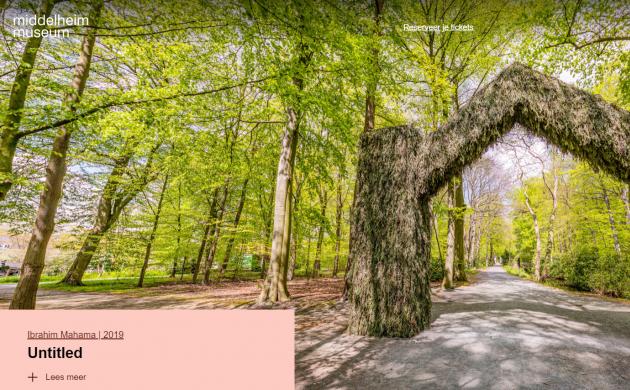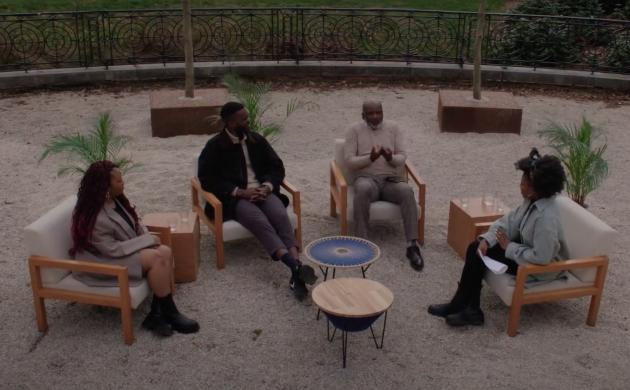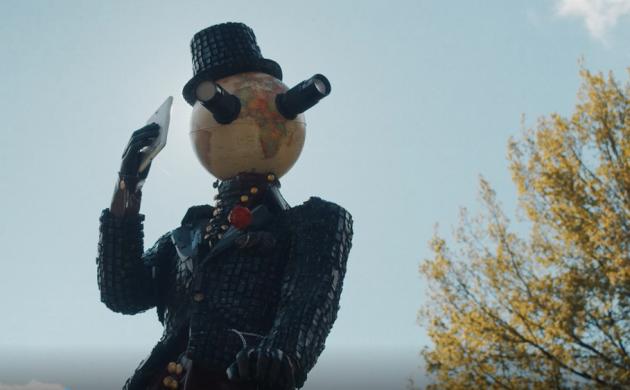About the exhibition
Guest curator Sandrine Colard uses Congoville as a collection of physical and mental traces from the colonial past in Belgium. These traces are often hidden in plain sight and continue to have a conscious or unconscious effect in today’s society. In this project/exhibition the traces are a school building, a parc, imperialist myths, but also the presence of people with African roots (who are) born in Belgium. Fifteen international artists inhabit the imaginary city Congoville where they guide the visitor over the Middelheim site. They walk as ‘black flâneurs’ through present and history and guide us in a quest to represent once again an open and shared public space. Their artistic practice presents different and new perspectives to a history that is too often told from a single perspective. Together with Leuven University Press, Middelheim Museum is publishing an exhibition catalogue in which, alongside interviews with the artists, numerous authors, academics and experts zoom in and out on the project.
Participating artists: Sammy Baloji (DRC/BE), Bodys Isek Kingelez (DRC), Maurice Mbikayi (DRC/SA), Jean Katambayi (DRC), KinAct Collective (DRC/BE/FR), Simone Leigh (US), Hank Willis Thomas (US), Zahia Rahmani (FR), Ibrahim Mahama (GH), Ângela Ferreira (PT/MZ/SA), Kapwani Kiwanga (CAN/FR), Sven Augustijnen (BE), Pascale Marthine Tayou (CAM/BE), Elisabetta Benassi (IT), Pélagie Gbaguidi (BEN/BE)
Sandrine Colard (BE/US) is curator and assistant professor of African Art History at Rutgers University, Newark.
Artist talk
An artist’s talk gathers curator Sandrine Colard with two of the 15 artists participating to Congoville. Pélagie Gbaguidi and Sammy Baloji, respectively originating from Senegal and The Democratic Republic of the Congo, are both based in Belgium. Exploring several of the exhibition’s facets, their discussion ranges from the role of education and public space in decolonization, and commemoration, among others. The conversation was set in the main auditorium of the former Colonial College. In addition to being one of the exhibition venues of Congoville, the occupation of the school as a space for the creation of future decolonial archives seeks to reverse its role as Belgian colonial spirit’s matrix into a springboard for its unlearning.
Practical information
The exhibition shows works of art that are set up both outside and in three indoor locations. A visit to the exhibition does not require tickets or reservations.
When visiting this exhibition, you will follow a fixed route:
- Start at the main entrance of the museum (Middelheimlaan 61), take a visitor's guide and follow the route described in the guide.
- The first indoor venue is the University of Antwerp Campus Middelheim building A.
- Follow the route through the art park and visit the collection pavilion first of all and the Braem pavilion after that.
Please note that you will need about half an hour to walk from the starting point (main entrance), past the various artworks, to the first indoor venue.
A visit to the Congoville expo takes about 2 hours.
The indoor venues close at 4PM.
Covid-19 measures
- Wearing a face mask is recommended in the indoor locations. This does not apply to children under the age of 12 and people who cannot wear a mouth mask for medical reasons.
- Follow the predetermined route and keep your distance.
- Carry bags and backpacks on the stomach.
- Do not return paper plans after your visit.
- Don't wait at the exit.
Photo: Pascale Marthine Tayou, Colored Stones (detail), 2018
Courtesy the artist and GALLERIA CONTINUA, exhibition view Hedges, Edges, Dirt - ICA / VCU, Richmond, USA, 2018.
© ADAGP, Paris. Photo by David Hunter Hale for ICA / VCU.






